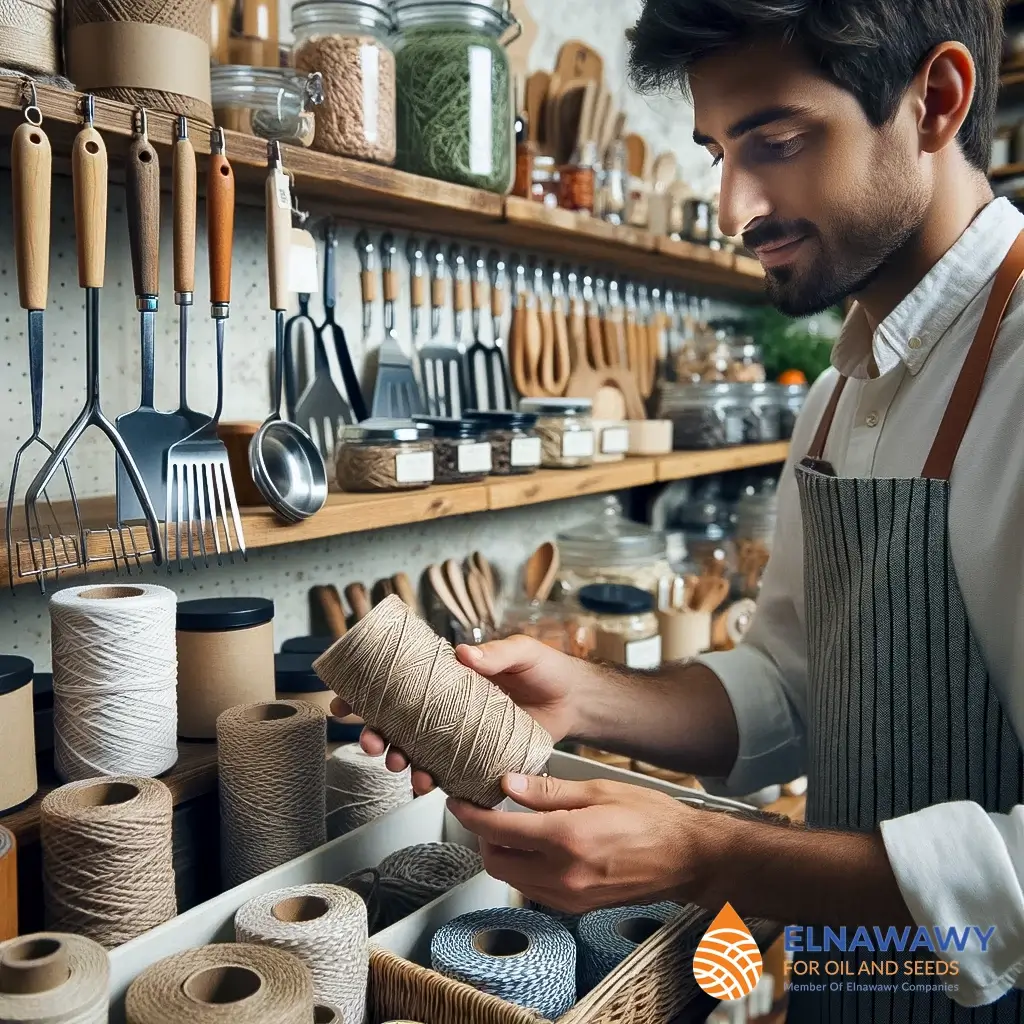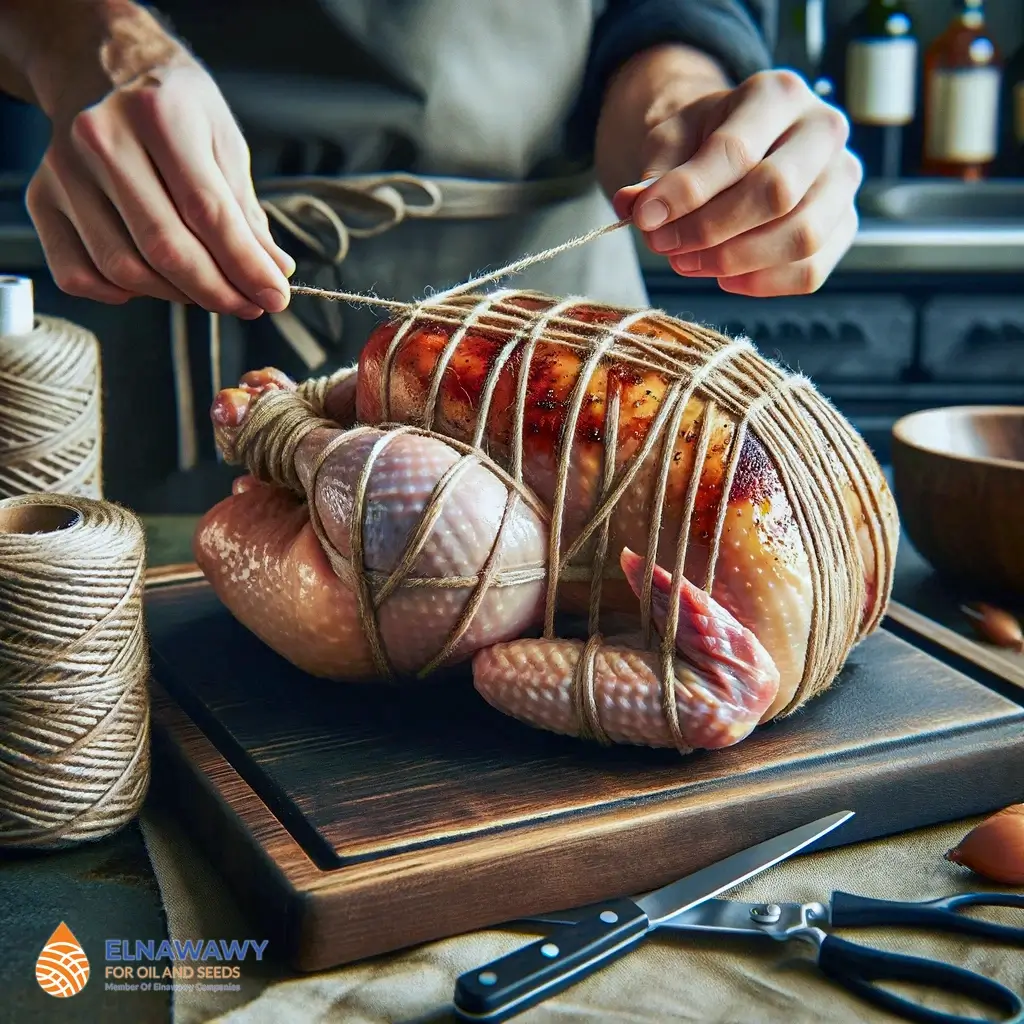Linen Butchers Kitchen Twine is an essential piece of equipment for cooking, especially in professional kitchens. It’s not only for butchers—chefs, home cooks, and barbecue enthusiasts alike use this versatile string to perfect their culinary creations.
Butcher’s twine is frequently used to hold filled meats and tie unusually shaped roasts, resulting in even cooking and a visually appealing finished product. This guide will explore everything you need to know about linen butcher’s kitchen twine, its uses, benefits, tips, and answers to frequently asked questions.
Linen Butcher Twine in Cooking and Meat-Tying Equipment
Linen butcher twine is an essential tool in the culinary world, particularly in meat preparation. Its primary uses include tying roasts, trussing poultry, securing stuffing, and other cooking tasks that require a reliable and food-safe binding material. This natural fiber twine is favored for its strength, heat resistance, and lack of harmful chemicals, making it safe for direct contact with food.
Characteristics of Linen Butcher Twine
Material: Linen butcher twine is made from flax fibers, which are known for their durability and resilience. Linen is a natural, biodegradable material, making it an environmentally friendly choice.
Strength and Durability: Linen fibers are strong and can withstand significant tension without breaking. This makes linen twine ideal for tying and securing heavy cuts of meat.
Heat Resistance: Linen twine can endure high temperatures, making it safe to use in ovens and during grilling. It doesn’t melt or impart any unwanted flavors to the food.
Food Safety: Since linen is a natural fiber, it doesn’t contain synthetic chemicals or dyes that could leach into the food. It’s a safe choice for direct food contact.
Versatility: Apart from meat tying, linen butcher twine can be used for other culinary tasks like securing bundles of herbs (bouquet garni), tying off sausage casings, and even some baking applications.
See more:
Welcome to the World of Flax Yarn: Your Ultimate Guide to Sustainable Style

What is Butcher’s Twine?
Linen Butchers kitchen twine, sometimes called cooking string or kitchen twine, is an oven-safe string primarily used for cooking beef joints. It’s typically made from natural fabrics like cotton or linen, which are safe for oven use and do not impart any undesirable flavors, colors, or aromas to the food. Linen butcher’s kitchen twine, Especially, is prized for its strength and durability
Why Choose Linen Butcher’s Twine?
Compared to other kinds of twine, linen butcher’s kitchen twine has the following advantages:
- Heat Resistance: Linen can tolerate high temperatures without burning or melting, making it ideal for use in the oven.
- Strength: Linen fibers are known for their robustness, and this guarantees the twine won’t break while tying up meat.
- Natural and Safe: Unlike some synthetic substitutes, linen is a natural textile that doesn’t produce toxic chemicals when heated.
- No Residue: Linen butchers kitchen twine doesn’t leave behind any residue or fibers on the meat, ensuring a clean presentation and taste.
Linen Butchers Kitchen Twine
Uses of Linen Butcher’s Twine
The extremely adaptable linen butcher kitchen twine has many culinary uses, including:
- Trussing Poultry: Tying up the legs and wings of poultry ensures even cooking and a neat appearance.
- Securing Roasts: Wrapping a roast in linen twine helps maintain its shape and ensures it cooks evenly.
- Tying Stuffed Meats: Keeps the stuffing inside meats like rolled pork or beef, ensuring a flavorful and well-presented dish.
- Making Herb Bundles: Tying herbs together makes them easy to remove from a dish before serving.

Alternatives to Butcher’s Twine
Although linen butcher kitchen twine is usually the best choice, in certain situations there are other options as well:
- Green onion ropes and skewers: Some chefs use these as makeshift trussing tools, but they might not be as reliable as twine.
- Reusable Roasting Bands: These are an alternative that can be cleaned and may not fit larger chunks of meat. They are made of heat-resistant silicone.
- Avoiding Jute Twine: Jute twine, although natural, burns easily and sheds fibers, making it unsuitable for cooking purposes.
Tips for Using Linen Butcher Kitchen Twine
Take in consideration, the following advice to get the most out of your linen butcher’s twine:
- Pre-soak the Twine: Before using, soak the twine in water for a few minutes to stop it from burning if exposed directly to heat.
- Use Sharp Scissors: To cut the twine cleanly, make sure you use a pair of sharp scissors or a knife.
- Secure Tightly: Ensure that the string is fastened securely enough to keep the meat together without cutting it.
See more:
Linen Yarn: The Benefits of Use
Linen Butcher Kitchen Twine and Meat-Tying Equipment
In addition to the twine itself, a few pieces of equipment can improve the effectiveness and efficiency of the meat-tying procedure. These tools are especially useful in professional kitchens and butcher shops where speed and consistency are essential. Let’s explore some of the most commonly used butcher’s twine and meat-tying supplies.
Butcher’s Twine Ring Knife
Chefs and butchers may swiftly cut twine while freeing up their hands with the help of a butcher’s twine ring knife. The little blade on the ring is ideal for cutting through rope without reaching for scissors or a knife, and it sits comfortably on the finger. This tool enhances efficiency and safety in the kitchen.
Butcher’s Twine Dispenser
A twine dispenser is a need. It avoids tangles and waste by keeping the twine neatly twisted and readily accessible. A built-in cutter is a feature that some dispensers have, which increases user convenience. Some dispensers come with a built-in cutter, making it even more convenient to use.

Meat Tying Machine
A meat-tying machine can greatly boost production in high-volume meat processing. By automating the process of tying roasts and other meat cuts, these devices guarantee consistency while saving time. Large kitchens and butcher shops are two commercial situations where they are very helpful.
Purchasing Linen Butcher Kitchen Twine
Ensure the linen butchers kitchen twine is labeled as oven- and food-safe when you purchase it. Specialty kitchen supply stores and internet vendors frequently carry high-quality linen twine. To decrease the possibility of melting or poisonous vapors, look for items that state they are composed entirely of natural fibers.
FAQs About Linen Butchers Kitchen Twine
What is the best material for butcher’s twine? Natural fibers like cotton and linen work best for making butcher’s twine. These materials don’t add any undesirable flavors to the dish and are robust and heat resistant.
Can I use regular twine for cooking? Not every thread may be used in cooking. Using twine composed of natural fibers, such as linen or cotton, that can tolerate high temperatures without burning or producing hazardous compounds is essential. Steer clear of synthetic twines that might melt and release harmful fumes, such as polyester or polypropylene.
How do I tie a roast with linen butcher’s kitchen twine? When tying a roast using butcher’s twine, the meat is secured in place by encircling the twine around it. To begin, set the roast on a sanitized. Cut a long piece of twine and place it under the roast. Bring the ends of the twine up and over the roast, tying them together tightly but not too tight to cut into the meat. Repeat this process every few inches along the length of the roast to ensure it is securely tied.
Is linen butcher’s twine reusable? Typically, linen butcher’s kitchen twine is intended for single use due to hygiene and food safety considerations. Once used, especially if it has been in contact with raw meat, it should be discarded to avoid cross-contamination.
Where can I buy high-quality linen butcher’s twine? Gourmet cooking stores, internet sellers, and specialty kitchen supply stores sell high-quality linen butcher’s twine. Make sure the rope has an oven- and food-safe label.
Can I use butcher’s twine on a grill? Yes, butcher’s twine can be used on a grill as long as it is made from natural fibers like cotton or linen. These materials can withstand the high heat of a grill without burning.
Please contact El-Nawawy Company if you have any inquiries or would like to acquire premium linen butcher’s twine. Having worked in the field for more than 50 years, El-Nawawy.
In conclusion, Linen Butchers Kitchen Twine is a valuable addition to any kitchen. Its strength, durability, and versatility make it suitable for a wide range of cooking and household tasks. Whether you are trussing poultry, tying herbs, or preparing a roast, Linen Butchers Kitchen Twine ensures that your food remains secure, and your cooking process is efficient. Its eco-friendly nature also makes it a responsible choice for the environmentally aware cook.
